Akkadians & Assyrians 10/9/2024
1/11
Earn XP
Description and Tags
BGSU 1450
Name | Mastery | Learn | Test | Matching | Spaced |
|---|
No study sessions yet.
12 Terms
What was the time period of the Akkad (Akkadians)?
Akkad (Akkadian), c. 2300-2100 BCE (Akkad, Iraq)
What was the time period of the Assyrian Empire?
Assyrian Empire, c. 1300-612 BCE (Assur, Nimrud, Nineveh, Iraq

Head of an Akkadian Ruler
Akkadian (c. 2250 BCE)
Bronze
30.7 cm
Ritual mutilation of his eye, archaic smile, patterned beard, mask-like, hair acting as headgear, hair looks woven.
Mutilated eye: intentional? (ear also hurt) or did it fall over? Could have been expensive material there, possibly done later to hurt his image/him
Hair is a sign of virility, power, and masculinity
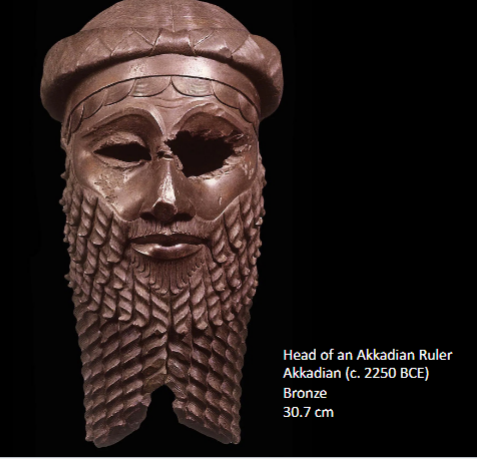
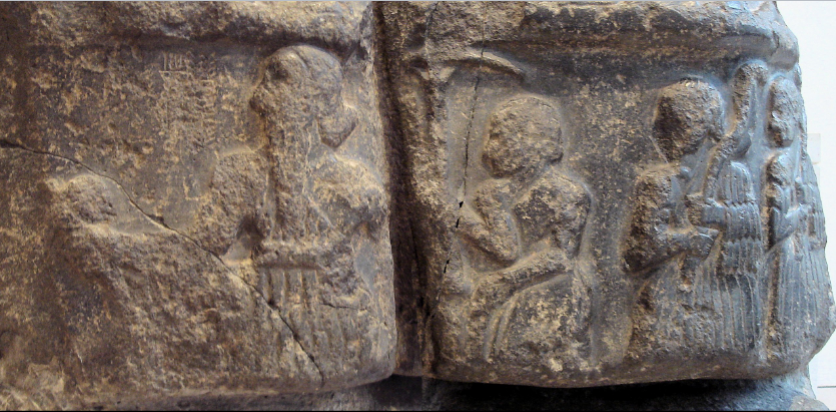
Sargon of Akkad
r. 2334 – 2284 BCE
“King Sargon” Šar-ru-gi lugal
Victory Stele of Sargon
Akkadian
diorite
He was emperor for 50 yrs, Akkadian used cuneiform
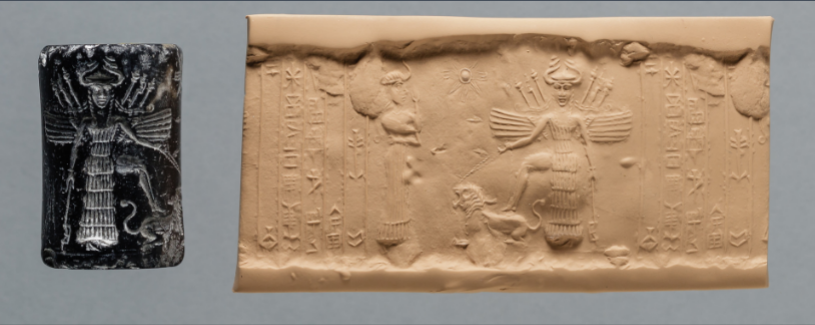
Cylinder Seal
Akkadian, 2350–2150 BCE
limestone
4.2 cm H x 2.5 cm D
Frontality, fused with animals, plethora of weapons, stepping/controling lion (her sacred animal)
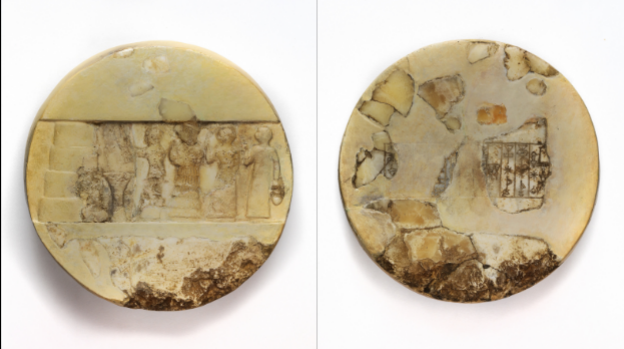
Enheduanna Disk, Akkadian (c. 2350 – 2300 BCE), limestone and calcite, d. 25 cm
Priestess who signed her name (1st ever)

Stele of Naram-Sin
Akkadian (c. 2250 BCE)
Limestone
200 cm (6’ 7”)
Hieratic scale, the aftermath of the battle, found in Susa but was originally elsewhere, had a life outside of original culture, moved very far because it is a trophy and shows that they’re better/one-upping his victory as their own.
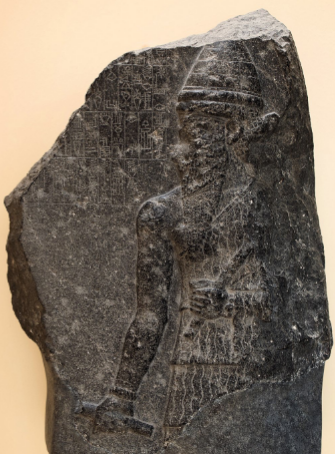
Curse of Akkad
Akkad failed because of salt water irrigation
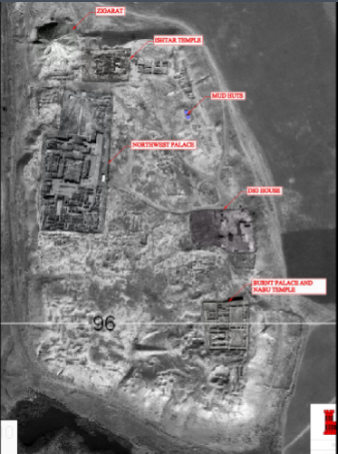
Assyrian
Nimrud
Capital city
879–706 BCE
Ever expanding
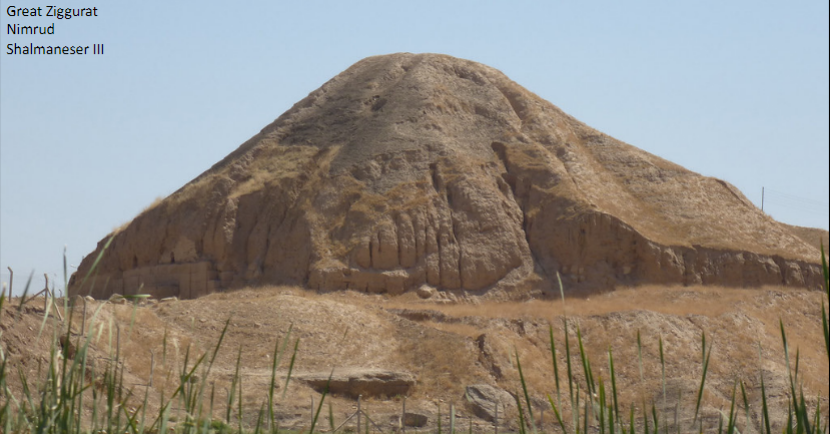
Great Ziggurat
Nimrud
Shalmaneser III
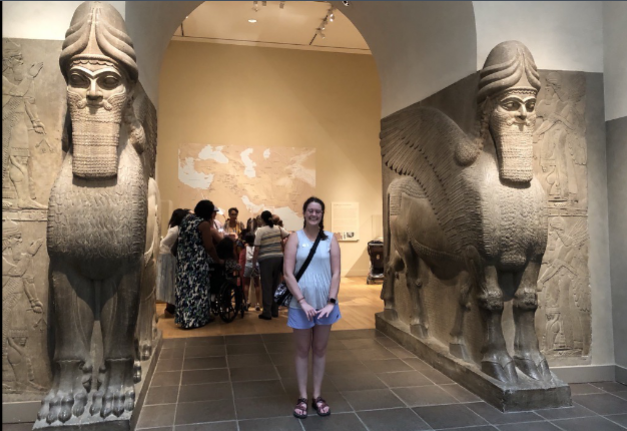
What are these?
Lamassu—guarded entrance, apotropaic, walk when you walk, still when you are still.
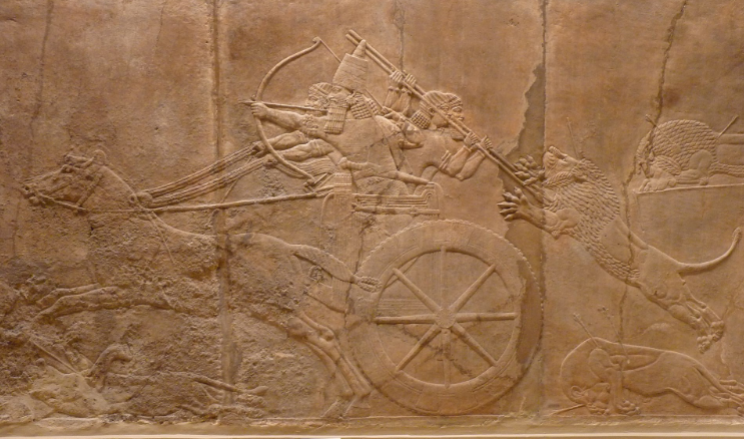
Relief depicting Ashurbanipal (r. 669–631 BC)
Ashur #1 god, hunting lions, not hunting in the wild, thought to be heroic and brave but now we think the opposite